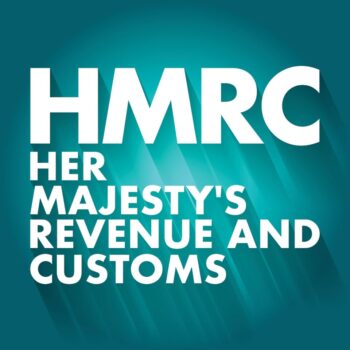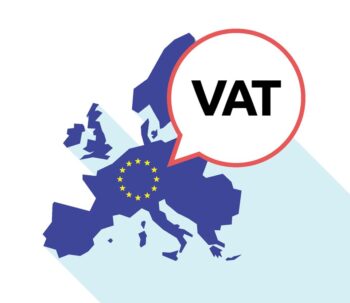Your Local Broker, Internationally
Berthon UK
(Lymington, Hampshire - UK)
Sue Grant
sue.grant@berthon.co.uk
0044 (0)1590 679 222
Berthon France
(Mandelieu La Napoule, France)
Bruno Kairet
bruno.kairet@berthonfrance.fr
0033 (0)4 93 63 66 80
Berthon Scandinavia
(Henån, Sweden)
Magnus Kullberg
magnus.kullberg@berthonscandinavia.se
0046 304 694 000
Berthon Spain
(Palma de Mallorca, Spain)
Simon Turner
simon.turner@berthoninternational.com
0034 639 701 234
Berthon USA
(Rhode Island, USA)
Jennifer Stewart
jennifer.stewart@berthonusa.com
001 401 846 8404
The Other Side of Brexit – VAT & Customs
By Simon Anslow
Where are we now? So, it has finally happened – 47 years after we joined, 27 years within a fiscal frontier free territory, 4½ years following the referendum and at the end of an 11-month transitionary period, Britain has left the EU.
We are now a ‘third country’ – or at least most of the UK is, as there are special rules for Northern Ireland…
So, what happens now for yacht owners, distributors and brokers?
In simple terms there is no longer the free, unfettered movement of pleasure craft to and from what is now the EU27 – whenever a yacht leaves the UK or the EU27 this is an ‘export’ and, more importantly, whenever a yacht enters either the UK territory or the territory of the EU27 it is an ‘import’. Therefore movements between the UK and the EU27 are now subject to border controls and relevant Customs provisions and as such VAT (and in some case Customs Duty) is potentially due each and every time a pleasure craft enters either territory, unless it qualifies for one of the available reliefs:
- Returned Goods Relief (RGR)
- Temporary Admission (TA)
- Transfer of Residence (ToR)
The much heralded 11th hour Free Trade Agreement (FTA) does not provide the silver bullet many hoped for and in real terms simply gives flexibility on quotas, facilitates trade in certain sectors and allows for favourable Customs Duty tariff rates on trade between the UK and EU27 (although this is a only a bi-lateral agreement and still subject to complex place of origin rules).
VAT Status – Does it still exist?
Within the sector we have often referred to yachts having VAT Paid Status; in real world terms this meant that they had VAT paid on them at the right time and place and were then free to travel and operate throughout the EU. If the yachts were subsequently sold within the EU (unless being sold by a business that had previously reclaimed VAT on the purchase), no further VAT was payable.
It was understood that as an owner of a yacht that had VPS or a broker or distributor selling a VAT-paid yacht, that it could not only move about the EU28 freely, but could also leave and re-enter without any VAT or Duty being payable. There was a general awareness that there were rules regarding the amount of time a VPS yacht could remain outside the EU or if there was a change of ownership, but generally speaking there was not too much attention paid and yachts moved freely within, to and from the EU without necessarily fully understanding how or why this was possible.
Brexit has changed all that and brought the whole process of inter-territory movement, VAT status and the mechanics behind the process into sharp focus. It now also means that movements of pleasure craft that we all previously took for granted or sales of yachts where all that was required was to confirm its VPS have now become a lot more complicated. It is now necessary to determine what the initial status of the yacht is, where it was as at 23:00 UTC 31st December 2020 (the end of the transitionary period), who the current owner is, their residency status, the history of the yacht and where it is going to travel to/ be sold into.
Let’s start with the basics
A yacht can only have status in one territory at a time and technically cannot have ‘dual status. Therefore, a yacht will either have UK status, EU27 status or no status. Following Brexit, the starting point for VPS where was the yacht at 23:00 UTC 31 December 2020 (Brexit):
- UK Status Z In the UK and in free circulation within the EU28 (supportable VPS)
- EU27 Status Z In the EU and in free circulation within the EU28 (supportable VPS)
- No Status Z Outside of both the EU27 and the UK
To put this into context this means that an owner whose yacht was prior to Brexit able to move freely between the UK and the rest of the EU in what was recognised throughout as having VPS, if that yacht was in the UK as at Brexit, then they would now be required to pay VAT (and possibly Duty) when they next take it to an EU27 member state – and potentially have to also pay VAT/Duty on re-entry into the UK!
Likewise, a broker or dealer who has taken in a part-ex yacht with VPS prior to Brexit – and who would have been able to sell that anywhere within what was the EU28 without further VAT being chargeable – if that yacht was located within the EU27 as at Brexit they would now be required to pay VAT on importation into the UK.
There was much talk – and significant indication from UK HMRC – prior to Brexit, that VPS would effectively be ‘grandfathered’; i.e. where a yacht was in free circulation, VAT-paid anywhere within the ‘old’ EU prior to Brexit, then post the UK departure, both territories would respect that VPS and the yacht would in effect have ‘dual status’.
However, as only as recently as December 2020, UK HMRC acknowledged that this would not be possible. The primary reason being that as ‘status’ is effectively determined from a number of factors and movement between countries is subject to various different reliefs and regimes derived from several parts of the Union Customs Code, the EU VAT Directive and various supporting legislation, there was no one all-encompassing law or set of rules that would or could apply. Further, the Withdrawal Agreement and guidance simply did not adequately cover or make provision for ‘goods’ whose primary purpose was to move about, often between territories.
So, we then need to look at the reliefs and the extent to which they are available to and can be used by owners and businesses.
The Reliefs #1
1. Returned Goods Relief (RGR)
When a yacht leaves a territory (UK or EU) it is, as we have stated, ‘exported’ and technically loses its VAT status. On returning to that territory it is being ‘imported’ and subject to VAT/Duty; but this can be relieved – and the VAT status ‘revived’ – provided certain conditions are met:
- The yacht had VPS at the time of departure
- Return is within three years of departure
- There has been no material change to the yacht
- The person who is re-importing is the same as that who exported the yacht
RGR is and has been used on a regular basis by most yacht owners and businesses without even necessarily realising it! Interestingly, while there is a requirement for most ‘transported’ goods leaving and entering a territory to submit a formal Customs clearance, on which the relevant RGR Customs Procedure Code would be entered and the relief formally claimed, a yacht under its own power does not need to make that formal declaration and (as we will see with TA later) needs only to be physically in the territorial waters to be making its declaration.
However, the declaration and relief can if desired be formally dealt with and is recommended in circumstances where there has been a protracted absence from the relevant territory and/or in the event of a potential challenge or when providing supporting evidence of VPS on subsequent sale of the yacht.
Brexit has changed the rules, but with the UK no longer being part of the EU it does now mean that a significant number of yacht movements will now fall within the scope of its requirement and eligibility. For example, Mr & Mrs Miggins sailing from Lymington across to France for the weekend and back now falls within the scope of ‘export/import/RGR’.
Going back to our owner whose VPS yacht was in the UK at Brexit – we know that that yacht now has UK status and effectively lost its EU27 status, BUT if that owner has had the yacht within the EU27 at any time and they return to the EU27 within three years of the last departure (and this can be evidenced), then they have a potential eligibility for RGR and reviving their EU27 VPS. Further if they return to the UK within three years…and so on, so whilst they cannot technically have dual status, they do for all practical purposes.
The advantage in this example of course if that should the owner want to sell the yacht in the EU (where the market may be more conducive), the sale price will be competitive as VAT-paid – without having that status, any EU buyer would be looking at having to pay an additional amount of VAT to formally import the yacht.
As for the broker trying to sell a VPS yacht in the UK that was in the EU27 as at Brexit – at face value VAT will be payable on importation to the UK…BUT hold it there – provided the broker or business has not actually ‘acquired’ or taken ownership of the yacht AND the current owner can demonstrate that the yacht had been within the UK within the three years (see opposite) prior to the planned import into the UK, then it may possible to structure the transaction such that the yacht is brought back to the UK in the name of the current owner (with the broker/ purchaser acting as agent and possibly underwriting costs), who will qualify for RGR. The yacht is then sold – in the UK – to the new owner, with the UK VPS restored and maintained. Of course, the yacht will now have lost its EU27 VPS as on any subsequent return to the EU27 the owner will be different to the person who will have exported the yacht to the UK.
But what is the position for all those owners who have yachts in the EU27 and did so across Brexit – and for many they were last in the UK more than three years ago or, as is the case for most who purchased their yachts out in the Med, have never had their yacht in the UK?
Good news/bad news – for those who can demonstrate that they have had their yacht in the UK at some stage in the past and they were the owner at the time of last departure, then irrespective of whether that last visit was within the last three years or beyond, HMRC have agreed by concession to allow RGR provided the yacht returns to the UK by 30 June 2022.
However, HMRC have – so far – determined that where current owners have NOT previously had the yacht in the UK (e.g. where it was acquired VPS in the EU27 and remained there), then despite the fact that they have already ‘paid’ VAT in the EU at a time when the UK was part of the club, they will not be entitled to RGR. The reason given is that under the current legislation there do not fulfil the first ‘R’ of RGR!
There is, though, a strong lobby action currently being undertaken by British Marine and the RYA, the two largest members organisations for business and owners respectively, to persuade UK HMRC to allow some form of transitionary measure that would allow owners to benefit from a form of RGR – a Repatriation Relief if you like – if they bring the yacht to the UK within a reasonable timeframe, provided they can demonstrate that it was in free circulation / VAT paid prior to Brexit, they were the owner at the time of Brexit, but irrespective of whether they had ever had the yacht in the UK previously. There are murmurs that the penny may finally have dropped with HMRC, but it is now a waiting game…
And for those owners who were outside EU as at Brexit?
Provided they were the person who removed the yacht from the EU28, the yacht had VPS at that time and they return to either the UK or the EU27 within three years of departing the EU28, they will qualify for RGR in whichever territory they first return to. The question is, will they then be able to claim RGR if they subsequently travel to the other territory on the grounds that they will then be returning from a 3rd country?! The question has been put to the EC Commission and the UK HMRC – the answer is still pending.
About that three years
The RGR rules do state that the yacht must return within three years of the date of export; for the UK that has raised two important questions:
What is the date of ‘export’?
Technically yachts that left the UK for another EU member state before Brexit were not ‘exported’. However, HMRC have adopted in full into UK domestic law the EU legislation, effectively exchanging ‘UK’ for ‘EU’, thus they maintain that a yacht is now considered as having been ‘exported’ as of the date it last left the UK, irrespective of whether that was for the EU or RoW – effectively changing how an event is treated long after the event itself!
Is the three years absolute?
HMRC do have the discretion to waive the three years for ‘exceptional’ circumstances. Until Brexit it was certainly the policy where yachts were being brought into the UK under their own power and reported to the UK Pleasure Craft Team that provided all the other conditions were met, RGR would be allowed irrespective of the length of time since last departure. During Brexit discussions there has been a noticeable hardening of attitude from HMRC Policy Team (although they deny it…!), stating that the three years should only be waived for exceptional circumstances. They have been challenged on this, but so far have failed to provide any proper response – or provide any guidance on what they will accept as ‘exceptional’. Although there has been an indication that neither a global pandemic and lockdown or Brexit with late indication from HMRC themselves that there would be no ‘grandfathering’ would be considered ‘exceptional’, so one does wonder quite they consider would be!
The Reliefs #2
2. Temporary Admission (TA)
TA allows a person to enter a territory – the UK or the EU27 – and use a yacht that does not have VPS nor is eligible for RGR, without the need to pay VAT/ Duty. The primary conditions are:
- The person using the yacht must be ordinarily resident outside the respective territory (UK or EU27)
- The yacht must be owned & registered outside the respective territory
- Private use only
- Can only remain within the territory for no more than a (continuous) period of 18 months
There are effectively three levels of declaration:
Full formal declaration – This is normally undertaken for yachts that are being transported, where the Customs agent will file a full formal declaration along with the shipping documentation, usually before arrival.
Oral Declaration – The owner or agent will report to Customs on arrival and report the full details of the movement and arrival; a completed TA document (format is consistent and accepted across the EU) will then be provided and, where TA is being used within the EU27, should be accepted across the EU for the duration.
Physical Presence – The method that covers most trips in and out; interestingly for the notoriously bureaucratic EU, the mere presence within the territory is the ‘declaration’.
Several points to bear in mind as regards the EU27 approach to TA, in particular with the ‘Physical Presence’ declaration:
- Although going 12+ nautical miles offshore means that the territory of the EU27 has been exited and the yacht technically ‘exported’, it is imperative to ensure that a fully recorded and validated GPS reading is taken and the log book duly noted; and even then some EU27 Customs authorities can get fussy and insist that ‘exit’ is not properly effected unless landfall is made at a 3rd country.
- The 18 months is continuous; therefore leaving and returning resets the clock, so in theory, provided it properly documented and supported, a yacht could be operated and kept (with the requisite breaks) indefinitely within a territory. However, again some EU27 Customs authorities can seek to challenge the TA where they consider a yacht is being kept on what is in effect a permanent basis. Circumstances where an owner has a long-term berth and/ or property where the yacht is being kept are sometime used by local Customs to support an argument that the owner is a d-facto resident and not eligible for TA.
- A detailed logbook recording all movements of the yacht, including ex-EU27 GPS readings, landfall outside the EU27 and copies of supporting documentation is recommended, along with carrying documents confirming non-EU residency (passport, utility bills, Local Authority council tax etc).
- Whilst the ‘Physical Presence’ declaration is satisfactory, consider, where possible, making an Oral Declaration and have the TA formalised – particularly in a ‘friendly’ member state – with a document that can then be presented on demand throughout the EU27.
The Reliefs #3
3. Transfer of Residence (ToR)
Little known, but useful relief for owners who are returning to live in the UK having spent a period of time abroad; in particular this will be useful for those moving (back) from the EU27 to take up residence in the UK. Relief for VAT/Duty on goods (including private pleasure craft) being brought to the UK will be given where:
- VAT/Duty paid (where required) in accordance with where the goods were acquired
- The person claiming relief has been resident in the 3rd country for a continuous period of 12+months
- That person intends to become UK resident
- The yacht must have been in that person’s possession, in that 3rd country, for at least 6m before importation The yacht is the personal property of that person
- The yacht must not be lent, hired out, transferred or sold within 12m of importation (unless HMRC authorise)
The opportunity…but with a health warning!
The TA relief does present a potential opportunity for buyers of new or business-sale (explicit VAT charge) yachts. It is no secret that ta significant number of owners and buyers want to keep their yachts in the Med or around EU27 coastal waters. Prior to Brexit this would have meant for UK residents that VAT was payable – technically in the EU country of destination, but demonstrably payable somewhere within the EU28.
With the UK now being a 3rd country, for those UK residents that want to use and keep their yacht primarily in the EU27 and have no real interest in using it in the UK (where they would not be eligible), it is possible to have the yacht supplied to them as a zero-rated export and then take into the EU under TA, without payment of VAT.
However:
- The initial supply must be properly executed to qualify for zero-rating
- The yacht should preferably make landfall outside the EU/UK and be documented as such if being sailed
- If transported, ensure that ownership has passed to owner before arrival in EU country, and…
- …at least a formal ‘Oral Declaration’ is made in the name of the owner
- Full and proper logbook needs to be maintained
- UK no longer in the EU & not in the Schengen area – therefore UK residents only allowed 90/180 days in EU
- Be prepared for challenge by local Customs if:
- UK registered (almost literally a Red Rag To A Bull…!), and/or
- The owner has a long-term berth and/or property in the relevant EU27 country
Where and what next?
There remains real frustration and confusion as regards pre-owned yachts, their VPS in the EU/UK and the prospect that VAT will be payable twice on the same yacht – or the yacht becomes devalued as a consequence of ‘losing’ its VPS in the EU. UK HMRC have given a small concession in allowing yachts to return to the UK during 2021, waiving the 3yrs rule – but whilst welcome, it doesn’t really get us very far, particularly as this was sort of already there anyway with the Pleasure Craft Team’s approach to RGR and time limits.
The lobbying continues with both the UK HMRC and the EC Commission through the various bodies and there is a glimmer of hope that common sense will break out and the much promised ‘grandfathering’ will be bought into effect and restore some sort of parity.
In the EU27 we are already hearing stories of Member States’ Customs authorities taking their own view in terms of interpreting and applying the rules, in particular those concerning yachts in free circulation, but had the VAT originally paid in the UK, operation of TA where the owner has long term berths or local property and still insisting on VAT being payable on the TA of a new yacht as a ‘New Means of Transport’, despite the owner being perfectly entitled to that TA. What this indicates is that whilst there has been no change in the fundamental underlying rules, the close scrutiny now being applied as a consequence of the UK’s departure is highlighting a general lack of understanding of those rules, an inconsistent application and a collective failure on the part of the respective authorities to anticipate and prepare for the gaps in those rules.
The silver lining is there in the shape of the potential VAT-free TA market for UK buyers, but the cautionary note is that the care is needed to ensure that the cloud doesn’t overshadow that lining.
Definitely choppy waters in the world of VAT and Customs for some time yet!





